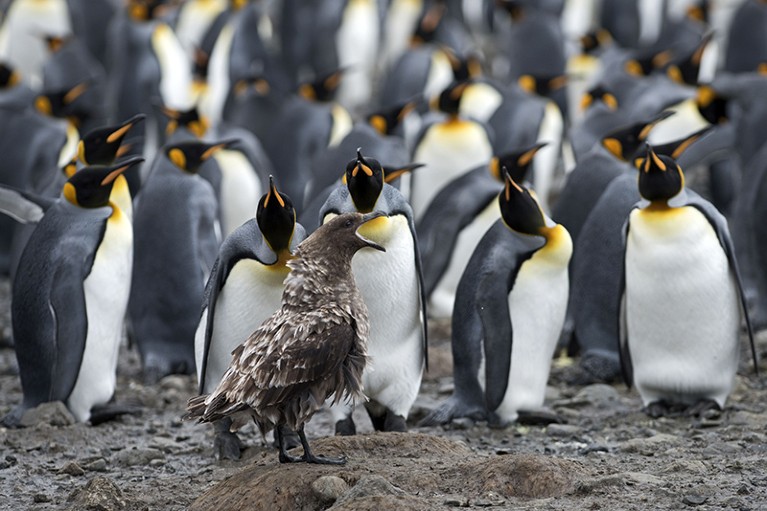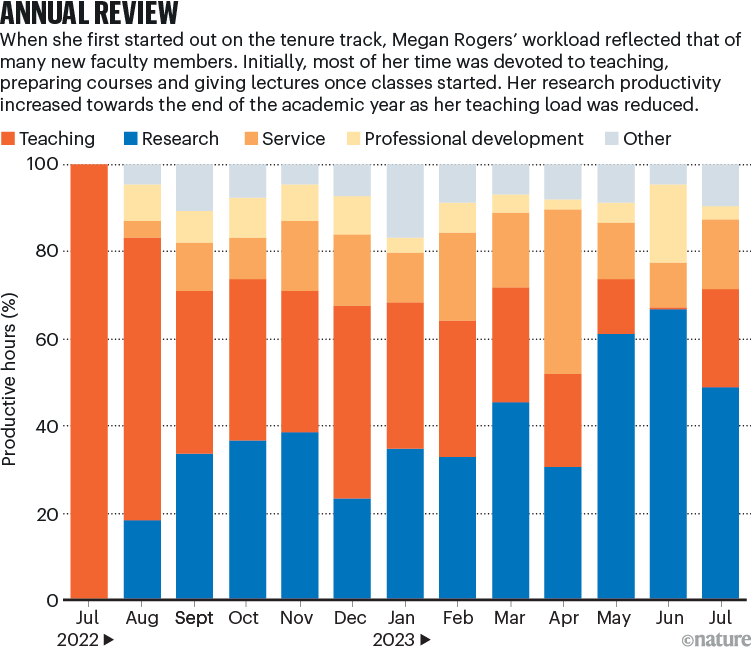[ad_1]
Hello Nature readers, would you like to get this Briefing in your inbox free every day? Sign up here.

Avian flu has been detected sub-Antarctic king penguins.Credit: Education Images/Universal Images Group via Getty
Some researchers in Antarctica are halting work after the global spread of deadly H5N1 avian influenza finally reached the continent. Bird flu was detected on the Antarctic mainland for the first time last month, in dead skuas (Stercorarius antarcticus). Spanish and Argentine research projects into vulnerable birds, seals and penguins have been suspended to reduce the risk of researchers spreading infection — or becoming infected themselves.
The most comprehensive report to date of compounds in plastic has found a laundry list of hazardous ingredients. Of more than 16,000 chemicals found in plastics or thought to be used in them, at least 4,200 are “persistent, bioaccumulative, mobile and/or toxic”, according to a group funded by the Norwegian Research Council. For more than 10,000 chemicals no hazard data were available, and for more than 9,000 there was no publicly available information about which plastics they are used in. The report’s authors argue for a ‘red list’ of 3,600 concerning compounds that should be regulated.
Reference: PlastChem Project report
Patients with a deadly type of brain cancer called glioblastoma saw their tumours shrink following CAR-T therapy, a treatment based on modifying a patient’s own immune cells to target proteins in the cancer. These are early results from two small studies, and in many cases the tumours grew back, but it suggests the treatment has promise. The goal now is to generate longer-lasting responses. “It lends credence to the potential power of CAR-T cells to make a difference in solid tumours, especially the brain,” says neurosurgeon Bryan Choi, lead author of one of the studies. CAR T cells are currently only approved for treating blood cancers, such as leukaemia.
References: New England Journal of Medicine paper and Nature Medicine paper
The US has approved the first drug to treat an obesity-linked liver disease that affects an estimated 5% of the world’s adults. Resmetirom, to be marketed as Rezdiffra, treats metabolic dysfunction-associated steatohepatitis (MASH) — formerly known as non-alcoholic steatohepatitis (NASH). After many earlier drug failures, resmetirom is the first to reduce scar tissue known as fibrosis in the liver. But researchers caution that evidence for long-term benefits is still needed. “Only time will tell,” says gastroenterologist Maya Balakrishnan. “In the end, what matters is: does this drug improve survival?”
A ‘hurrah moment’: go deeper into the development and approval of resmetirom in Nature Reviews Drug Discovery (10 min read)
Features & opinion
People have no memories from before about three years old, and no one knows why. “It’s a paradox in a sense,” says neuroscientist Flavio Donato. “In the moment that the brain is learning at a rate it will never show again during the whole lifetime, those memories seem not to stick in the brain.” New research suggests that maybe those memories aren’t gone after all — we just can’t consciously access them. Scientists are swapping lab rats and mazes for playrooms and plush toys to reveal what’s going on inside tiny tots’ heads.
A trio of experienced scientists has put together a project-prioritizing checklist to help early-career researchers from being pulled in too many directions. They suggest rating each project on a scale of 1 (strongly disagree) to 5 (strongly agree) on the following points:
• The project is with people I trust to be good scientists
• I look forward to meetings with my project collaborators
• The topic of the project is interesting to me
• The project fits with my desired professional identity
• Data collection for the project is going well
• The results seem to be robust
Disregard any projects that score a 1 in any category and charge ahead with those with the highest score.
In Journeys of Black Mathematicians, film maker George Csicsery reveals how Black scholars shaped today’s US mathematics community and provides hope for the future. “It is wonderful to learn about successes in academia and industry,” writes Black mathematician Noelle Sawyer in her review. “The question that needs to be asked now is which spaces are worth entering.” Furthering representation should not mean doing morally questionable work, such as creating weapons, argues Sawyer. “Pushing back against the inequities of the past and present should not include contributing to the oppression of others.”
Watch Journeys of Black Mathematicians online
Feeling scared or overwhelmed about the future of our warming planet is now part of the human condition, says atmospheric scientist Adam Sobel. The greatest harm of climate change, Sobel says, comes from its role as a ‘threat multiplier’ — for example, contributing to democratic backsliding. “The important thing is to remain engaged,” he says, for example by voting for politicians who push forward the clean-energy transition. Scientists can also orient their research more towards supporting climate-adaptation planning. “Maybe a more pragmatic and constructive question than ‘how doomed are we?’ is ‘what should we do about it?’”
Andrew Robinson’s pick of the top five science books to read this week includes a fascinating account of ophthalmology and life with vision impairment and a witty cogitation on how robots learnt languages.
Infographic of the week

Throughout her first year on the tenure track, psychologist Megan Rogers tracked all of her productive activities in 30-minute increments. Her key takeaways were that working more than 45 hours a week was unsustainable, tasks often took longer than expected, having a non-working life didn’t make her less productive and it’s OK for focus to ebb and flow over time. If you want to try out time tracking, you can download Rogers’ Microsoft Excel template. (Nature | 6 min read)
[ad_2]
Source Article Link

